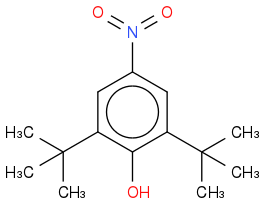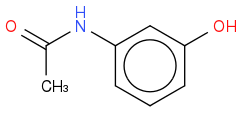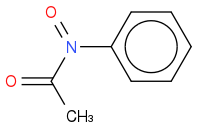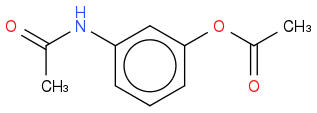Post by: T on July 15, 2015, 04:45:12 AM
(http://Screen Shot 2015-07-13 at 9.52.47 am.png)
Firstly the ethanoic acid will react with X to produce water. So I added the molar mass of ethanoic acid + molar mass of X - molar mass of water.
Only the compound D will give a sum of over 193g.
60 + 172.9 - 18 = 214.9g.
Could someone help me?
Thanks
Post by: mjc123 on July 15, 2015, 04:53:42 AM
Post by: T on July 15, 2015, 07:15:11 AM
Thanks
Post by: Dan on July 15, 2015, 07:49:51 AM
I am not sure about that.
Thanks
You know that none of these compounds would give MW = 193 g/mol if condensed with acetic acid in a 1:1 ratio - the simplest explanation is that the stoichiometry is not 1:1. Go from there.
Post by: T on July 16, 2015, 03:50:00 AM
alcohol + carobxylic acid :rarrow: ester + water
I will think about the question because I am still learning about organic pathways.
Thanks
Post by: Dan on July 16, 2015, 04:10:55 AM
I see thanks. I thought all reactions with alcohols and acids would be:
alcohol + carobxylic acid :rarrow: ester + water
I will think about the question because I am still learning about organic pathways.
Yes, alcohols (phenols in this case) react with carboxylic acid in a 1:1 ratio, but there are also other functional groups present (aromatic nitro, aniline, aryl bromide...). Could any of those other groups also react with carboxylic acids?
Post by: T on July 16, 2015, 06:06:14 AM
Is it correct to say that if 2 organic compounds both have a OH group then the 2 OH will always form water and the extra O will join the 2 compounds?
Eg. Alcohol + carboxylic acid --> Ester + water
I have been trying to find rules to determine reactions for organic compounds. Is there a general rule for determining reactions for organic compounds? Eg. They will always produce water when possible. Or are they all very different.
Thanks, this would help me a lot.
Post by: Dan on July 16, 2015, 11:10:00 AM
They will always produce water when possible. Or are they all very different.
You have to be very careful generalising, because there are a lot of factors to consider. I suppose you could say that all alcohols can potentially undergo Fischer esterification. How feasible it is in practice depends on the structural details (sterics, electronics,...) and the reaction conditions. For less reactive alcohols, different reactions involving more reactive acylating agents tend to be used.
You can expect Fischer esterification of the phenols you posted to proceed though.
Fischer esterification of something like this phenol would be very difficult:

Post by: T on July 17, 2015, 04:03:51 AM
Post by: T on July 18, 2015, 06:55:01 PM
-Since the C-H bonds are strong then they won't be the bonds that break in the reaction
-The O and the OH are where the 2 phenols will attach to in the carboxylic acid since they are both slightly negative compared to the C-H bonds which have no polarity.
-2 phenols will attach to the carboxylic acid, one of them to the OH producing water and ester. The other double bonded O will attract the NH2 and bond with the H2 producing water. And the N will double bond with the C that was double bonded to the O.
My answer is A. But the mass still doesn't add up:
Mass = 2×(16+1.008×7+14.01+12×6)-2×18+12×2+1.008×4+32
Mass = 242.164g
Thanks
Post by: sjb on July 19, 2015, 05:25:47 AM
Post by: T on July 19, 2015, 06:20:10 AM
I think that
An "A" molecule will react with the OH group in ethanoic acid producing water and an ester.
Another "A" molecule will react with the double bonded O, the 2 H from the nitrogen will bond with the O producing water, and then the N will double bond with the C that the O was previously double bonded to.
Thanks
Post by: Dan on July 19, 2015, 09:06:24 AM
I am not sure what you are asking but I am presuming you mean how the nitrogen will react.
I think that
An "A" molecule will react with the OH group in ethanoic acid producing water and an ester.
Another "A" molecule will react with the double bonded O, the 2 H from the nitrogen will bond with the O producing water, and then the N will double bond with the C that the O was previously double bonded to.
Thanks
Really you should give systematic names or draw the products you propose, because your descriptions are confusing.
Are you suggesting that this molecule forms?

Maybe there is another way to think about this... Consider the functional groups in isolation first:
Which of the following compounds react with acetic acid? What are the products?
1. Phenol
2. Aniline
3. Nitrobenzene
4. Bromobenzene
5. Toluene
Post by: T on July 20, 2015, 05:40:31 AM
Which of the following compounds react with acetic acid? What are the products?
So my idea is that the O and the OH in the acetic acid will react since it is slightly negative as it draws the electrons to itself.
Phenol:
Phenol + acetic acid --> ester + water
Aniline:
 + water
+ waterNitrobenzene
 + water
+ waterBromobenzene
I doubt it reacts but the best I could come up with was this:
 + BrOH
+ BrOHToluene
Not sure about this
My reactions are all based on my knowledge of organic chem, I am probably wrong. I have tried looking for sites that give you a general idea to predict organic reactions but can't find any.
Also, is the O or the OH in acetic acid more reactive? Or does it depend?
Thanks
Post by: Dan on July 20, 2015, 06:46:08 AM
1. Phenol reacts to form an ester (phenyl acetate)
2. Aniline reacts to form an amide (acetanilide)
So, if you have a molecule containing both an aniline and a phenol, what will the product be?
Note: nitrobenzene, bromobenzene and toluene will not react with acetic acid.
Post by: T on July 20, 2015, 05:16:02 PM
So, if you have a molecule containing both an aniline and a phenol, what will the product be?
I am not sure what you are asking. If you are asking will a ester or amide be formed when this molecule react with acetic acid I would say ester since I think that the OH from the molecule is more likely to react.
Thanks
Post by: Dan on July 21, 2015, 01:36:18 AM
So, if you have a molecule containing both an aniline and a phenol, what will the product be?
I am not sure what you are asking. If you are asking will a ester or amide be formed when this molecule react with acetic acid I would say ester since I think that the OH from the molecule is more likely to react.
Thanks
What happens when acetic acid is in excess?
Post by: T on July 21, 2015, 04:33:57 AM

And the mass adds up.
Thank you very much for helping me Dan